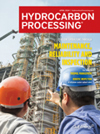Pressure swing adsorption vessels fatigue analysis
The hydrogen (H2) plant in a refinery produces high-purity (99.9+ vol%) H2 products using a licensed pressure swing adsorption (PSA) purification process to fulfill the H2 makeup needs of refinery hydroprocessing facilities.
IP: 18.118.200.136
The Author
Kittur, A. - Saudi Aramco, Ras Tanura, Saudi Arabia
Aslam Kittur is a mechanical engineer with expertise in troubleshooting integrity issues related to refinery static equipment. Kittur is the Static Equipment Engineer for the Technical Services Division of Saudi Aramco, and has more than 23 yr of experience in the energy industry (upstream, offshore and downstream), specializing in performing stress analysis to understand the complex failure mechanisms of critical equipment. He focuses on establishing root causes for repetitive failures and developing solutions to ensure a reliable design for all operating conditions. Kittur earned an MS degree in solid mechanics and employs FEM-based structural and thermal simulations often required for a Level-III API-579 Fitness-For-Service Evaluation. Before joining Saudi Aramco, he served in a similar role in Canadian oil sands facilities for 10 yr.
Related Articles
From the Archive







Comments